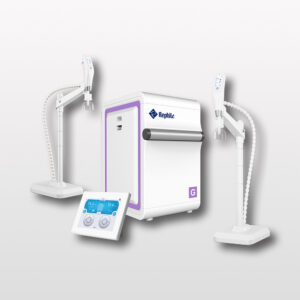
At Interlab, we understand how important it is that the equipment and consumables you use deliver accurate results; this is why we supply Johnson Test Papers – they are accurate, efficient, and economical.
While we are happy to offer you with the means of testing reliably, we will not stop there. We also want our customers to understand the scientific processes that go on when they carry out their routine testing. Spreading awareness about the fascinating molecular processes that take place in our everyday tasks is something we take very seriously at Interlab.
So, how do water testing strips work? Let’s break down the science behind a few different testing strips:
pH Test Strips: The most commonly used test strips out there, almost everyone would have used one at some point in their lifetime, and they area staple item in every school lab. In order to function, pH test strips contain pH indicator dyes like litmus and bromothymol blue. These dyes exist in acidic or basic forms, depending on the solution they are in, and they change colour accordingly. At a certain pH, the dye will exist in equilibrium between its acidic and basic forms, and when the pH of the solution being tested shifts, the equilibrium between the acidic and basic forms of the dye also shift – this means that the relative concentrations of these forms change and hence also the colour of the test strip. So, if the pH of the solution is more acidic, it favours the acidic form of the dye, and shifts the equilibrium towards that side of the scale, altering the colour we see on the test strip correspondingly.

Water Hardness Test Strips: In these test strips, a chelating agent (typically ethylenediaminetetraacetic acid (EDTA) or its salts) is incorporated into the matrix of the test strip. These chelating agents test for the presence of metal ions like calcium and magnesium, which are the main contributors to water hardness. EDTA is used for in these strips because it has multiple sites called “ligands,” which are capable of binding to metal ions; so when the strip is dipped into the water, any calcium or magnesium ions will bind to the EDTA molecules and form stable complexes. These complexes are often coloured due to their chemical properties, and the intensity of the colour change correlates with the concentration of metal ions in the water. Think about that next time you measure water hardness – so much going on in a tiny strip!

Ammonia Test Strips: The primary reagents impregnated in the test strip include terahydroborate ions and indicator dyes such as bromothymol blue, bromescol green, or bromophenol blue. When the test strip is dipped into water, any ammonia that is present reacts with the tetrahydroborate ions to form borazine. Borazine is colourless, so it must further react with the indicator dyes in order to produce a colour compound. The indicator dyes in the test strip undergo a colour change when in contact with borazine because it alters the chemical environment around the dye molecule. The formation of the colour compound is directly proportional to the concentration of ammonia present in the water, allowing us to easily measure the ammonia levels in our water!
The complex processes that carry on beneath our noses will never cease to amaze us! We hope that we may have been able to impart some knowledge that sparks a renewed enthusiasm for the scientific research and development that is ever so crucial in today’s world. If you would like to purchase some test strips for yourself, feel free to browse through our selection and don’t hesitate to ask our friendly team if you have any questions!
To order your Johnson Test Papers today, we have a great online ordering system which you can find right here.
You can also order via email: sales@interlab.co.nz or just give us a FREE call 0508 331 331
If you want to see more information about Johnson Test Papers, click here to check out our last blog.


